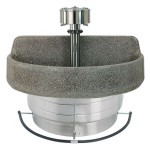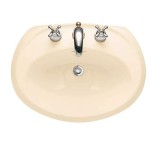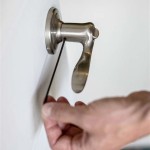How Much Does It Cost To Change Bathroom Tiles?
Renovating a bathroom can significantly enhance a home's value and create a more enjoyable living space. A key element of bathroom renovation is often changing the tiles. However, budgeting for this project can be complex due to the numerous factors influencing the final cost. This article explores the various cost components associated with changing bathroom tiles, helping readers gain a clearer understanding of the potential expenses involved.
Key Factors Influencing Cost
Several factors contribute to the overall cost of changing bathroom tiles. Understanding these factors is crucial for accurate budgeting and planning. These include:
- Size of the Bathroom
- Type of Tile
- Labor Costs
- Existing Bathroom Condition
- Additional Materials and Features
Bathroom Size and Tile Costs
The size of the bathroom is a primary determinant of the total cost. Larger bathrooms naturally require more tiles, increasing material expenses. The area to be tiled, including floors, walls, and shower enclosures, directly impacts the quantity of tiles needed. Accurately measuring the square footage is essential for obtaining precise cost estimates.
Tile Selection and Pricing
Tile prices vary significantly based on material, design, and origin. Basic ceramic tiles are generally the most affordable option. Porcelain tiles, known for their durability and water resistance, are typically more expensive. Natural stone tiles, such as marble or granite, represent the higher end of the price spectrum, offering luxurious aesthetics but at a premium cost. Intricate mosaic tiles or custom-designed tiles can also add to the expense.
Labor Costs and Professional Installation
Labor costs constitute a significant portion of the overall bathroom tiling project. Hiring a professional tiler ensures proper installation and a high-quality finish. Labor rates can fluctuate based on geographic location, the complexity of the project, and the tiler's experience. Factors such as removing existing tiles, preparing the surface, and installing complex patterns can influence labor costs.
Assessing the Existing Bathroom Condition
The existing condition of the bathroom can impact the project's overall cost. If the existing tiles are difficult to remove or if there is underlying damage to the walls or floor, additional time and labor may be required for repairs. Addressing issues like water damage or mold can add unexpected expenses to the budget.
Additional Materials and Features
Beyond the tiles themselves, several other materials contribute to the overall cost. These include grout, thin-set mortar, backer board, sealant, and potentially waterproofing membranes. Adding features like heated flooring, decorative borders, or niche installations will further increase the project's expense.
Budgeting for Tile Removal and Disposal
Removing existing tiles often incurs additional costs. Labor for removal, disposal fees for the old tiles, and potential repairs to the underlying surface should be factored into the budget. Some contractors may include removal in their overall quote, while others may itemize it separately.
Obtaining Accurate Cost Estimates
Getting accurate cost estimates is critical for effective budget planning. Obtaining multiple quotes from reputable contractors allows for comparison and ensures competitive pricing. Detailed quotes should itemize material costs, labor charges, and any additional expenses. Clear communication with contractors about desired tile choices, project scope, and timelines is essential for accurate estimations.
Planning and Project Management
Careful planning and project management are essential for staying within budget and minimizing disruptions. Setting a realistic budget, selecting materials in advance, and establishing a clear timeline with the contractor contribute to a smoother renovation process. Unforeseen issues can arise during any renovation, so incorporating a contingency buffer into the budget can provide financial flexibility.
Exploring Cost-Effective Options
Several strategies can help manage costs without compromising quality. Opting for more affordable tile options, such as ceramic tiles over natural stone, can significantly reduce material expenses. Careful planning and efficient use of materials can minimize waste and lower overall costs. Exploring sales and discounts on tiles can also contribute to savings.
Considering Long-Term Value
While cost is a significant consideration, focusing solely on the lowest price may not always be the best approach. Investing in high-quality materials and professional installation can enhance the bathroom's durability and longevity, potentially saving money on repairs and replacements in the long run. Balancing cost with quality and durability is crucial for making informed decisions.
Researching Tile Suppliers and Contractors
Thorough research is vital when selecting tile suppliers and contractors. Comparing prices, reading reviews, and checking credentials can help identify reputable and reliable professionals. Visiting tile showrooms and discussing project requirements with suppliers can provide valuable insights into material options and pricing.

Cost To Install Tile The Home Depot

Average Bathroom Tile Installation And Retiling Cost Forbes Home

Cost To Install Tile The Home Depot

How Much Does Tile Installation Cost 2024 Guide Modernize

How Much Does It Cost To Tile A Shower 2024

How Much Does It Cost To Retile A Shower 2024

How Much Does It Cost To Retile A Bathroom In 2024

How Much Does It Cost To Install A Tile Shower Homeserve Usa

5 Popular Bathroom Tiles And How Much They Cost Sweeten Com

How Much Does Bathroom Tile Installation Cost
Related Posts







